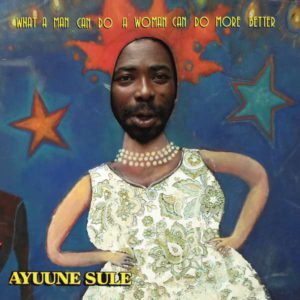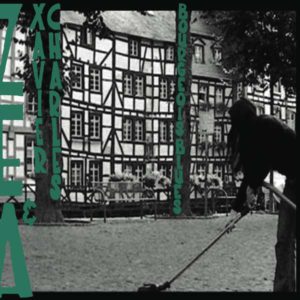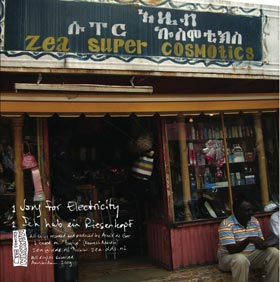Komitas Vardapet: Six Dances (LP)
Keiko Shichijo
MR 17 ● 10″ LP ● 2016
€17.00
Keiko Shichijo: piano.
This is a very special release of music from long ago and far away. When I heard Keiko Shichijo play this on a run down and wobbly piano in a basement-made-art-space a few years ago I could not believe my ears. Oscar Jan Hoogland, who invited Keiko to come and play, presented it with a story about Keiko who found this old Armenian music and fell in love with it. I think we all did that night. I immediately asked Keiko after the show what it all was exactly and she showed me copies of the score with the Armenian letters. I asked her if this music was out, if she had recordings and had put it out. She did not. I searched on the internet and found a few videos and a recording of the Six Dances but none was as compelling, playful and enchanting as what I heard from Keiko.
A few months later we met again, and I heard Keiko play the dances again, and then Oscar Jan and Keiko and me sat together and decided to record it and put it out. About twenty minutes, I thought, that is perfect for a 10” record. That would be quite something to have.
Keiko invited me and my recording equipment to the Geelvinck Hinlopen Huis in Amsterdam; a 16th century house along the canals in Amsterdam where she sometimes gives concert on a piano that’s just a bit younger. So we were going to record this on a historic instrument; a Steinweg Nachf piano, built in 1880, from the collection of Hans Kramer. Wow. And Hans was there too to help with the tuning and to be stand-by in case of anything. This was all quite unique, I was a bit situation-struck: a wonderful place, an amazing piano and this beautiful music. But it worked, we took it from the air and with the help from a few machines we got it cut into vinyl.
So here we are now with 300 pieces of 10” vinyl and some boxes filled with CDs waiting for the rest of the world to put their ears down to listen and been taken into the world of Komitas presented by Keiko Shichijo. Who’s first?
— Arnold de Boer, Amsterdam, October 2016.
Keiko Shichijo – piano
Keiko Shichijo is a Japanese pianist based in Amsterdam, The Netherlands. Active around the world as a soloist and a chamber musician, she performs with a focus on both historical performances and music from 20th and 21st century. In Europe Keiko studied fortepiano with Stanley Hoogland and piano with Daan Vandewalle.
In 2012, Keiko performed a series of concerts with an Armenian duduk player, with “Armenia” as a central theme. During that project she fell in love with the music of Komitas and began her research into Armenian composers. In April 2015 Keiko was invited to perform the music of Komitas at the newly built Komitas museum in Yerevan, Armenia.
Six Dances
In 1906 Komitas Vardapet wrote and performed a cycle of dances for piano in Paris. It is an exciting and original composition, where the piano appears as his main means of performance for the first time. All six pieces are based on original Armenian dance styles.
The first piece, “Yerangi”, points out the grace, elegance and tenderness of a woman’s dance. “Unabi” is “delicately and majestically” according to Komitas’ notes. The sweet melody consists of various changes of two melodic fragments, ably interlaced. In “Marali” and “Shushiki”, the timbres and characters of folk instruments are rendered vividly. In the former, Komitas imitates the sound of the “dap”, a sort of Armenian tambourine, widely used by peasants as accompaniment. In the latter the listener can hear imitations of the tar, a plucked string instrument. “Het u Araj”, a men’s round dance, is distinguished by its special colouring. Komitas imitates the shvi and the dhol, both Armenian folk instruments. The former is a sort of shepherd’s reed pipe and the latter a kind of hand-held percussion instrument played without sticks.
The finale of the cycle is “Shoror”, a heroic men’s dance. Komitas marks that it should be performed “majestically and heroically” as well as with an imitation of the shvi and the dhol, which usually accompanied that dance during folk festivities.
Komitas Vardapet
Komitas, also spelled Gomidas, is the pseudonym of Soghomon Soghomonyan, who was born on September 26, 1869 in Anatolia, Turkey, in the town of Kütahya. His father, Gevorg Soghomonyan was a shoemaker, his mother was a carpet weaver, both talented singers.
Komitas’ mother died when he was only six months old and he was raised mainly by his grandmother. He loved singing and as a child he knew many children’s songs and folk songs from the different villages. When Komitas was 11 years old his father died. At that time the priest of Kütahya, G. Dertsakyan, had to leave for Echmiadzin to be ordained a bishop and he decided to bring the orphan Komitas with him to study at the Echmiadzin Church Seminary. Soon Komitas learned to speak perfect Armenian and in 1890 Soghomon was ordained a monk. He graduated in 1893. He adopted his pseudonym of a 7th-century Armenian hymn writer and was ordained a “Vardapet” (priest). At the seminary Komitas was assigned to teach music. Along with teaching, Komitas organised a choir and an orchestra of folk instruments, and it was then that he did his first research into the field of Armenian Church music.
With the support of the Catholicos Khrimian and the Armenian tycoon Mantashev, Komitas Vardapet could study composition in Berlin (1896-1899), and began composing his own music on Armenian motifs. In his performances he introduced the European audiences to Armenian, Turkish and Kurdish folk music and to Armenian religious music, while he was also researching the system of Armenian musical notation, known as “khaz”.
Komitas returned to Ottoman Armenia in 1899 and collected more folk music, making him one of the pioneering figures in ethnomusicology. In order to bring greater exposure to this music, he moved to the Ottoman capital of Constantinople. After living and working in Constantinople for five years, Komitas was arrested on April 24, 1915, the first day of the Armenian genocide. Along with other Armenian intellectuals, Komitas was transported to Cankiri, in central Anatolia. With the help of the American ambassador, among others, he was brought back to Constantinople, but he was a changed man, suffering from post-traumatic stress disorder. The details of what he witnessed during his deportation are unclear to history, but he never recovered. Komitas moved to Paris, where he spent the rest of his life in a mental institution. He died on October 22, 1935 and is considered a martyr of the Armenian genocide. His remains were transferred to Yerevan, where the Pantheon of Writers and Artists is named after him.






Reviews
There are no reviews yet.